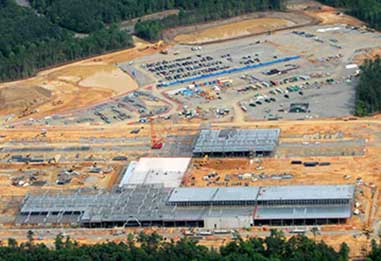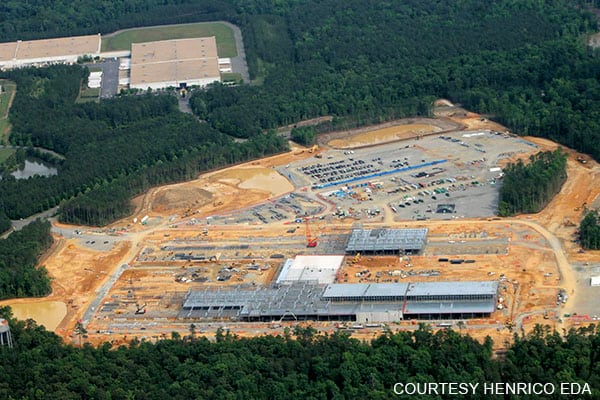
News
Blog | 3 min read
September 26, 2018

Facebook’s recent announcement of a two-phase $1.5 billion data center project in the Richmond Region can attributed to a major factor: extremely high-speed intercontinental fiber lines.

The Richmond Region offers one of the best location values for data centers in the Mid-Atlantic. The region offers pre-certified, secure sites, reliable fiber and redundant power paired with moderate costs and a business-friendly operating environment. Companies such as Peak10, QTS, Capital One and Bank of America all operate data centers in the Richmond, Va., region.
Facebook partnered with Telxius and Microsoft to build MAREA, the transatlantic submarine cable with the highest capacity to date. The MAREA cable operates at 160 terabytes per second (Tbps) to transport large amounts of traffic, as well as to handle other market needs such as virtual reality, IoT, and artificial intelligence. In layman’s terms, the cable allows speeds more than 16 million times faster than the average home internet connection, with the capability to stream 71 million high-definition videos simultaneously.
The BRUSA cable, exclusively owned by Telxius, connects San Juan, Puerto Rico, and Rio De Janeiro and Fortaleza, Brazil. It will be the highest capacity transatlantic subsea cable to ever connect the Americas to date — up to 138 Tbps.
“More and more content is being consumed, which requires a great deal of bandwidth, which is why the whole world needs to be connected to an infrastructure capable of transporting large volumes of data,” said Rafael Arranz, COO of Telxius.
The MAREA and BRUSA subsea cables port in Virginia Beach before traveling inland to one of the densest concentrations of data centers in the world — the Washington, D.C., area. One of MAREA’s main characteristics is its Mid-Atlantic location, much farther south than other transatlantic cables, thus diversifying connectivity through the Atlantic. In addition, the MAREA’s landing stations in both Sopelana (Spain) and Virginia (U.S.) are two key connectivity points with the United States, Africa, the Middle East and Asia.
However, after landing in Virginia Beach, the cables’ route first runs directly through the Richmond, Virginia, region with a much lower cost of doing business compared to the Northern Virginia area. In fact, Henrico County recently reduced its data center tax to a state-low 40 cents per hundred dollars to lure projects to the area.
Local utility provider Dominion Energy designed a renewable power tariff with Facebook for to develop solar power facilities to serve the 2.4 million-square-foot data center. Dominion will spend $250 million for the solar farm that would generate an estimated 300 megawatts of electricity.
Joining the MAREA and BRUSA connections in the future are three more fiberoptic lines:
“Extending SAEx to the United States will boost access to the worldwide infrastructure, opening up traffic diversity to increase access and service reliability as demand from consumers and businesses alike grows rapidly,” said Dr. Rosalind Thomas, MD of SAEx International.